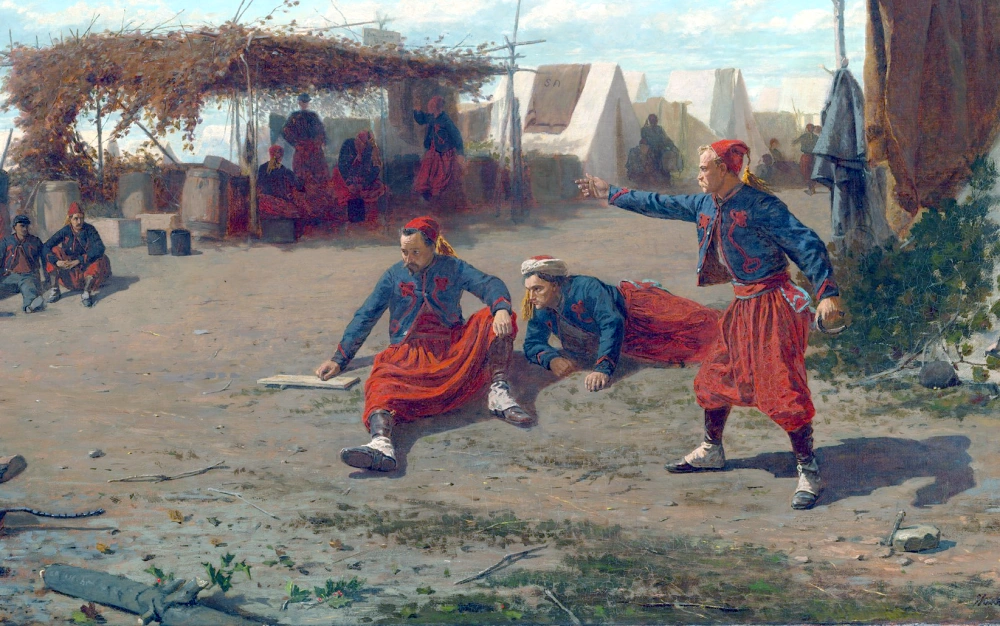Before the Civil War broke out, a military fashion craze from North Africa took hold of the United States. Men, women and children dressed in Turkish-flavored outfits inspired by the Zouaves, a French infantry unit famous for its fighting prowess in Algeria and the Crimea.
When the Civil War started, tens of thousands of volunteer soldiers joined Zouave regiments on both sides. They adopted the flashy Zouave uniforms as well. The men wore short, embroidered jackets, flowing pantaloons, a sash, a fez. And despite making them easier targets, the Zouave uniforms came in bright red, blue and yellow.
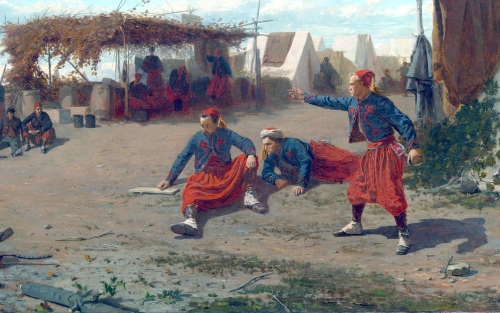
Pitching Quoits
The Zouaves made an irresistible subject for an ambitious young artist with a pass to the battlefront. That artist, Winslow Homer, was also interested in the black people who escaped slavery by fleeing to Union Army camps.
Homer depicted a number of Zouaves and escaped slaves on the Civil War battlefront in his sketches, paintings and etchings. The backstory to his painting, Contraband, tells a lot about the artist and about the war.
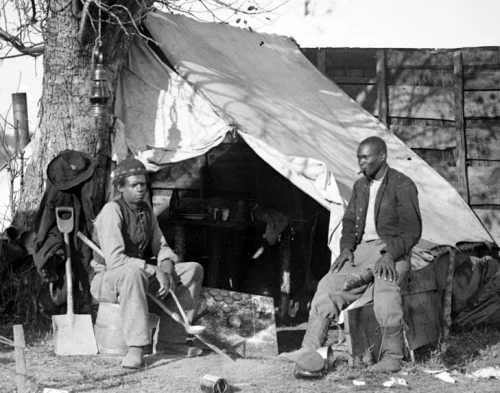
Contrabands in Culpeper, Va.
Zouaves
The Zouaves began in French North Africa in 1830 as a regiment of volunteers from the Zwawa tribes with French commissioned and noncommissioned officers. The tribesmen had fought with the Ottoman Turks. French soldiers replaced the Zwawa, but not their uniforms. They earned a reputation for their prowess on the battlefield as fierce, daring and lightning fast.
The Zouaves then fought in the Crimean War, where they came to the world’s attention.
Elmer Ellsworth, a young patent clerk in Rockford, Ill., became drillmaster for the local militia, the Rockford Greys. He then branched out, training militia in Milwaukee and Madison, Wisc. In the meantime, he got engaged to Carrie Spofford, but her father objected because he didn’t make enough money. So he moved to Chicago to study law and got a job as a law clerk. But he couldn’t keep away from his avocation, and he took charge of a moribund National Guard unit – the National Guard Cadets of Chicago.
Ellsworth Meets Lincoln
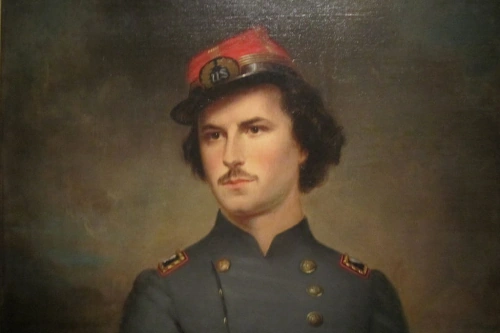
Elmer Ellsworth
In Chicago, Ellsworth met a French fencing instructor who told him about the Zouaves. Ellsworth then formed the U.S. Zouave Cadets of Chicago, and drilled them on the shores of Lake Michigan. Ellsworth took his Zouaves on a national tour, popularizing the elite unit.
He caught the attention of Abraham Lincoln, who hired him as his law clerk in Springfield.
Lincoln’s secretary, John Hay, wrote that Ellsworth, briefly, was the most talked-about man in the country. “His pictures sold like wildfire in every city of the land. School girls dreamed over the graceful wave of his curls, and shop-boys tried to reproduce the Grand Seigneur air of his attitude. Zouave corps, brilliant in crimson and gold, sprang up, phosphorescently, in his wake, making bright the track of his journey.”
When Lincoln won the presidency, Ellsworth, 24, went with him to Washington. His path would soon cross with Winslow Homer, a year older than he.
Winslow Homer
Homer was freelancing for a brash new magazine, Harper’s Weekly, when the Civil War broke out. He wrote little about his political views, though his paintings and his family history suggest a strong sympathy for enslaved black people.
He’d grown up in Boston, the seat of abolitionist fervor. His mother attended the abolitionist Park Street Church and taught him art at an early age.
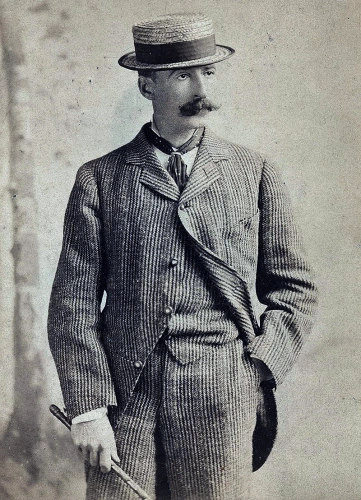
Winslow Homer
In 1854, he worked as a lithographer’s apprentice down the street from the clothing store where Anthony Burns worked. A slave hunter kidnapped Burns, who had escaped from bondage. As Burns sat in jail awaiting his return to the South, Boston erupted in a fury.
Philanthropist Amos Lawrence said, “We went to bed one night old-fashioned, conservative, Compromise Union Whigs and waked up stark mad Abolitionists.” Federal troops escorted Burns through Boston to the ship that carried him back to slavery in Virginia.
Six years later, Homer created a wood engraving of Frederick Douglass speaking before a crowd at the Tremont Temple. It appeared in Harper’s Weekly, which offered Homer a job. He turned it down, preferring to freelance. “I have had no master, and never shall have any,” he said.
In 1859, he moved to East 16th street in New York City, presumably to be nearer Harper’s editorial offices.
The Zouaves March To Virginia
On April 12, 1861, the South Carolina militia fired on Fort Sumter and the Civil War was on. The Confederacy’s fast-growing army eclipsed the Union’s standing army, and Lincoln called for 75,000 volunteers. Elmer Ellsworth went to his native New York and recruited the 11th New York Volunteer Infantry Regiment from the city’s volunteer fire companies. He sought out firefighters because of their physical fitness, bravery and camaraderie. Known as the First Fire Zouaves, they wore uniforms of blue, gray and red.
Homer had traveled to Washington on May 23, 1861, when Virginia seceded from the Union.
Hours after Virginia voters had approved secession the First Fire Zouaves formed the advance guard to other Northern regiments that marched over the Potomac. Homer watched as they headed into Alexandria to hold its important port. He described the scene.
They came down the avenue with, as heretofore, soul-stirring, far-sounding martial strains, but with quiet tread, more like that of hundreds than thousands of men…so little noise did they cause that hardly any of the denizens of Washington were awakened from their peaceful slumbers.
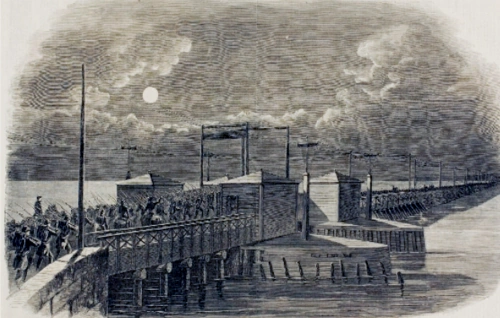
“The Advance Guard of the Grand Army of the United States Crossing the Long Bridge over the Potomac at 2 a.m. on May 24, 1861,” wood engraving by Winslow Homer.
The Death of Elmer Ellsworth
Shortly after arriving in Alexandria, Col. Elmer Ellsworth saw a huge Confederate flag flying from the roof of a boardinghouse. Ellsworth went into the inn with five men, climbed to the roof and cut the ropes holding the flag. He then went down the stairs with the flag over his shoulder and uttered his last words, “I have a trophy.” The innkeeper, James Jackson, shot and killed Ellsworth. Francis Brownell then shot and stabbed Jackson with a bayonet. Brownell won the Medal of Honor for killing Jackson.
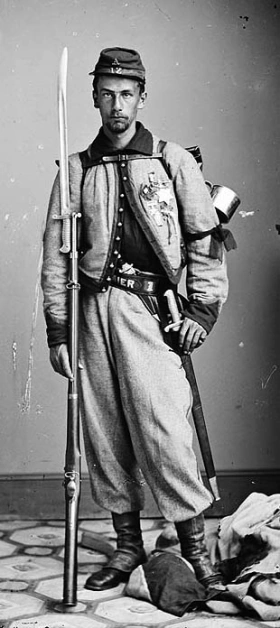
Francis Brownell
Lincoln then had Ellsworth’s body brought to the White House to lie in state.
Zouaves at War
Over the next four years, Homer made three visits to the war zone, creating lasting images of the battlefield and camp life for Harper’s. He followed his own maxim: “When I have selected the thing carefully, I paint it exactly as it appears.”
On what was probably his third trip, Homer embedded with another Zouave unit – the 5th New York Infantry Regiment, led by Abram Duryee. After the war he created one of his most memorable paintings, Pitching Quoits.
The war hadn’t ended when he painted a less ambitious work featuring Duryee’s Zouaves, The Brierwood Pipe.

The Brierwood Pipe
He had plenty of zouave units to choose from. At the start of the war, there were about a hundred “zoo-zoo” units. The Union had more than 70 regiments with about a thousand soldiers each, while the Confederacy had about 25 Zouave companies. Many, like the Boston Tiger Fire Zouaves, were recruited from volunteer fire companies.

Unidentified soldier of 10th Rhode Island Infantry Regiment in Zouave uniform with bayoneted rifle
The Zoo-zoos fought from that first engagement in the Alexandria boardinghouse to Appomattox. As the war dragged on, however, they lost their flamboyant uniforms and blended in with the rest of the troops.
Contraband
Another feature of camp life fascinated Homer: contrabands.
Freedom from slavery could be gained by reaching Union lines. Gen. Benjamin Butler came up with the policy toward escaped slaves, which set the stage for emancipation.
On the same day that Virginia seceded from the Union, three men fled slavery and reached Fort Monroe in Hampton, Va., under Butler’s command. Other Union officers had turned escaped slaves over to civilian authorities, but Butler had a different idea.
A lawyer before the war, he used a legalistic rationale for freeing enslaved people. First, they were property under Southern law. Secondly, Southern law said no property could be returned to a foreign country. Butler reasoned that since the South had seceded it was a foreign country. Therefore, escaped slaves were contraband. Eventually Butler’s policy became official. Hundreds of thousands of escaped slaves then got their freedom by running off to the Union Army.
Homer produced a number of images of black people in the war zone. He tended not to use caricature to depict black people, unlike most white artists of his day.
His watercolor Contraband, painted in 1875, shows two people who may have seemed strange to each other. A Zouave, possibly one of the Boston Tiger Fire Zouaves, sits next to a ragged, dusty black child. Their knees touch, and both seem weary. The Zouave offers his canteen of water to the boy.

Contraband
Aftermath
When Homer created Contraband, the war had long ended. He moved on to paint images of Reconstruction, including many of black people. He would, in the words of Alain Locke, break artistic stereotypes about the Negro.
The Zouaves survived the war. Veteran groups sometimes dressed in Zouave uniforms for honor guard ceremonies. And in 1953, the American Legion Zouaves performed a drill on the Ed Sullivan Show.
With thanks to Winslow Homer: American Passage by William R. Cross.
Images: The Brierwood Pipe By Winslow Homer – The Bridgeman Art Library, Object 491292, Public Domain, https://commons.wikimedia.org/w/index.php?curid=23774451. Contraband By Winslow Homer – Art Renewal Center, Public Domain, https://commons.wikimedia.org/w/index.php?curid=23665404. Rhode Island Zouave White, J. photographer From J. Whites’s Ambrotype and Photograph Gallery, 224 Essex Street, Up only one flight of stairs, Salem, Mass. United States, None. [Between 1861 and 1865] [Photograph] Retrieved from the Library of Congress, https://www.loc.gov/item/2013645723/. Contrabands (photo) O’Sullivan, T. H., photographer. (1863) Culpeper, Va. “Contrabands”. United States Culpeper Virginia, 1863. November. [Photograph] Retrieved from the Library of Congress, https://www.loc.gov/item/2018666349/. This story was updated in 2024.
